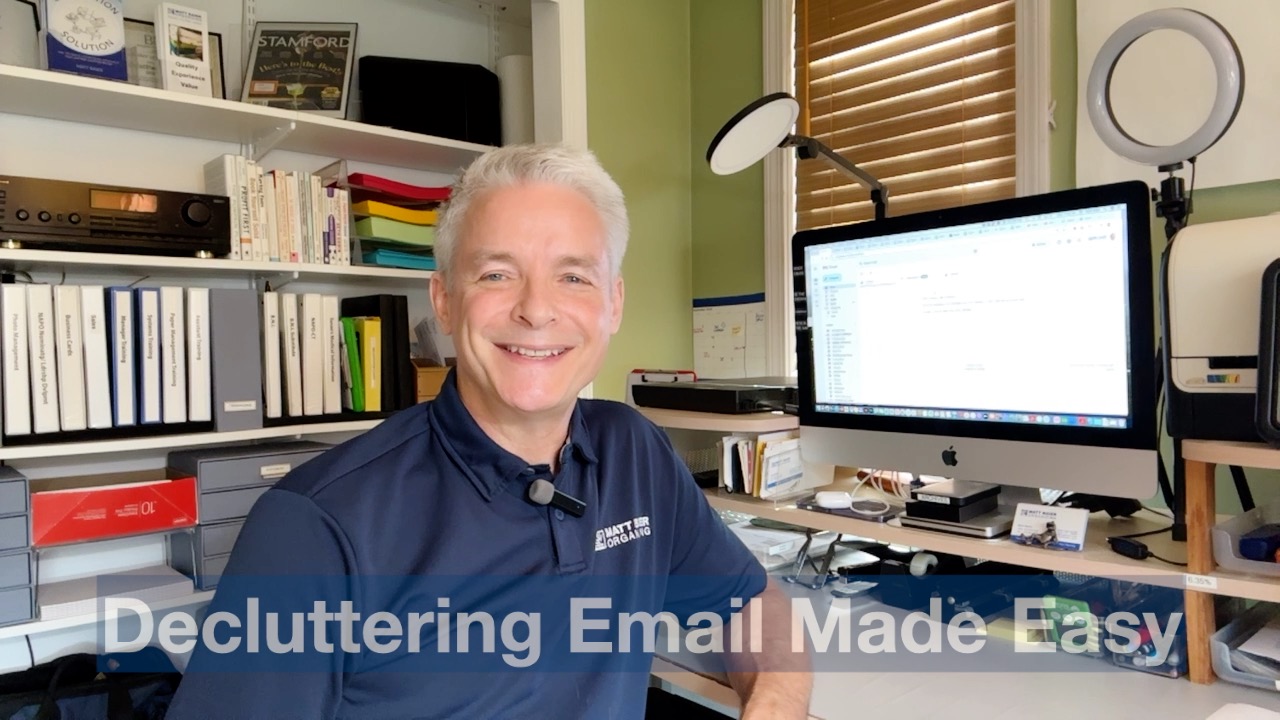Digital Decluttering Tips Organize Files Cut Virtual Clutter

Embracing Digital Minimalism
In an era where every click can lead to an avalanche of files, digital decluttering has become vital for maintaining both productivity and peace of mind. As we accumulate digital content ranging from photos to documents, the clutter can quickly overshadow our ability to find what we truly need. Emphasizing the principles of minimalism, organizing our virtual spaces can lead to a more focused and intentional life.
The Importance of Digital Organization
Managing our digital environments is not just about aesthetics; it directly impacts our mental clarity and workflow. Studies show that excess digital clutter can contribute to feelings of stress and overwhelm. By taking steps to streamline our digital lives, we not only enhance our efficiency but also cultivate a sense of calm amidst the chaos.
Get Ready to Transform
In this article, we will guide you through the Top 5 tips for decluttering your digital space. Each tip will empower you to take control, enabling you to discover the hidden potential in your virtual assets. Prepare to embark on a journey toward an organized, minimalist digital existence.
Top 5 Tips for Digital Decluttering: Organizing Files and Reducing Virtual Clutter
In the grand tapestry of our daily lives, the digital realm has subtly woven itself into nearly every thread. As emails flood our inboxes and storage devices reach their limits, the digital chaos can become overwhelming. In recent years, embracing digital minimalism has emerged not just as a trend, but as a vital practice for enhancing personal productivity and mental well-being. In this article, we delve into the top five strategies for effective digital decluttering, focused on the organization of files and the profound reduction of virtual clutter.
5. Regular Reviews: A Scheduled Clean-Up
Maintaining a clutter-free digital space hinges on the routine practice of scheduled reviews. By dedicating specific time intervals—whether it’s monthly, quarterly, or semi-annually—you form a habit that keeps digital disorganisation at bay. According to productivity experts, breaking down tasks into manageable chunks can significantly reduce stress levels associated with organization.

During these sessions, focus keenly on the following:
- Identifying outdated or unnecessary files: Evaluate files through the lens of necessity. Ask yourself: Does this file serve a current purpose? If not, consider deleting or archiving it.
- Organizing emails into folders or labels: ? Emails are significantly more manageable when categorized by project, urgency, or other relevant markers. Declutter inboxes by creating intuitive folder systems that work for you.
- Cleaning bookmarks and browser history: Digital tidiness includes purging unnecessary bookmarks and clearing your browser history to improve browser performance and maintain privacy.
Regular clean-ups not only streamline your digital environment but also imbue your files with a sense of order, helping you to treasure and appreciate what holds practical value.
4. Utilize Cloud Storage: Access and Organization
Services like Google Drive, Dropbox, and OneDrive have revolutionized how we store and organize digital files, transcending the limitations of physical storage devices. The cloud offers a virtual expanse for our documents, images, and videos, ensuring accessibility across continents and convenience no matter where we find ourselves.
Cloud storage provides substantial benefits:
- Organize files into folders for easy navigation: Create dedicated folders and subfolders that mimic your offline filing structure, making file retrieval intuitive.
- Share and collaborate on documents with ease: Real-time collaboration features streamline teamwork, reducing the back-and-forth traditionally associated with email attachments.
- Access files on-the-go: Whether you’re using a smartphone or tablet, cloud storage bridges the gap across devices, ensuring you’re never without your essential documents.
Additionally, many cloud services include automatic back-ups, safeguarding vital data from hardware glitches and natural disasters. This reliable safety net ensures that your digital life remains intact and retrievable at a moment’s notice.
3. File Naming Conventions: Clarity is Key
A significant yet often underprioritized element of digital organization is the systematic naming of files. Imagine searching for a document using vague or inconsistent file names—an exercise in frustration, to say the least. File naming conventions are the unsung heroes of digital decluttering, silently enhancing our workflow.
Consider these best practices:
- Include descriptive terms reflecting the content: A good file name provides a snapshot of what lies within, helping you identify and retrieve it swiftly.
- Incorporate dates for chronological order: Using the YYYY-MM-DD format keeps files sorted by date, simplifying the search for recent or specific-timeframe documents.
- Avoid special characters: Many systems struggle with special characters, potentially leading to errors in file retrieval processes. Stick to alphanumeric characters and underscores to avoid confusion.
Establishing a coherent naming convention fortifies the bridge between you and your digitally stored documents, eliminating unnecessary guesswork and frustration.
2. Declutter Your Email: Inbox Zero Strategy
Email inboxes, if left unchecked, can quickly devolve into chaotic digital archives. Implementing an “inbox zero” strategy—a disciplined effort to maintain an inbox that is empty or as close to empty as possible—can foster effective communication and enhance mental peace.
Steps to achieve inbox zero include:
- Unsubscribing from unwanted newsletters and promotions: By decluttering your inbox subscriptions, you prioritize what’s truly worthy of focus.
- Using folders for organization: Filed content not only helps keep your inbox uncluttered but also facilitates easy retrieval of past communications.
- Utilize filters for automated sorting: Leverage email filters to streamline your inbox, ensuring essential communications never get lost among spam.
This methodical approach transforms email management from a daunting chore into a straightforward and stress-free routine, allowing more focus on what truly demands your attention.
1. Digital Declutter Tool: The Power of Automation
At the forefront of digital decluttering are automation tools, with specialized applications tackling the cumbersome task of tidying up your virtual environment. Tools like CleanMyMac, CCleaner, and Disk Cleanup are designed to swiftly identify and eliminate unwanted files, duplicate documents, and caches that may bog down your system’s speed.
Furthermore, productivity apps such as Trello and Todoist introduce organization and efficiency into your digital life. They allow you to manage myriad tasks and projects efficiently, compartmentalizing your responsibilities into easily digestible segments. Such automation leaves you free to devote your energy to pursuits of genuine importance.
By adopting these applications, you draw clear lines between the essential and nonessential, focusing on what truly matters in your digital realm.
Incorporating these five strategies can transform your digital environment, ushering you towards a more organized, minimalist lifestyle. The freedom found within digital decluttering holds the power to unlock enhanced productivity and clarity, clearing the path to a renewed sense of tranquility in this fast-paced technological era.
| Category | Key Features | Advantages | Disadvantages | Who Benefits |
|---|---|---|---|---|
| File Organization | Structured and logical categorization of files | Facilitates quick access to documents; saves time in locating files | Requires initial time investment to organize | Individuals with extensive files or professionals managing large databases |
| Cloud Storage Solutions | Online platforms for storing and backing up files securely | Easy access from any device; enhanced collaboration features | Subscriptions may have costs; potential privacy issues with sensitive files | Teams and remote workers needing flexible access |
| Digital Tools for Decluttering | Apps and software that assist in automating file organization | Streamlines the process and reduces manual work; helps maintain organization | May not cover all needs; learning curve for new software | Tech-savvy individuals looking for efficient solutions |
| Regular Maintenance Routines | Scheduled check-ups and clean-ups for digital space | Helps in preventing buildup and ensures ongoing organization | Time-consuming without a designated reminder system | Anyone aiming for a clutter-free digital space |
Digital decluttering is more important than ever in our tech-driven lives. By employing these categories, individuals can not only save time but also create a more enjoyable digital environment. When files are organized, they become easier to manage, leading to greater productivity and an overall sense of control over personal or professional information. Each category provides unique benefits, helping to minimize digital chaos and streamline processes in ways that are essential for modern living.
FAQs on Digital Decluttering
What are the first steps to start a digital decluttering process?
Embarking on a digital decluttering journey can be both refreshing and overwhelming. The initial step is to identify the specific areas where you observe the most chaos, such as your email inbox, desktop files, or cloud storage. Prioritize these areas based on the frequency of use and the amount of clutter. Begin with small, manageable sections to avoid feeling overwhelmed. It’s crucial to set clear goals and establish a schedule for decluttering sessions. Consistency is key to ensuring the process is thorough and effective.
How often should digital decluttering be undertaken?
The frequency of digital decluttering depends largely on your digital habits and workload. For most individuals, a quarterly review is sufficient to maintain order. However, if you frequently deal with large volumes of data or work across multiple digital platforms, you might need a more frequent schedule. Regular tidying helps prevent overwhelming build-up and integrates decluttering as a natural part of your digital routine. Remember, a proactive approach can save significant time and stress in the long term.
Are there specific tools that can help with digital decluttering?
Indeed, several tools and applications can aid in streamlining your digital decluttering efforts. File management software, such as File Juggler and Hazel, can automatically organize files based on customized rules. For managing emails, tools like Unroll.Me can help you unsubscribe from unwanted newsletters in bulk. Additionally, utilizing cloud services for storage can free up space on your device while ensuring files are organized and accessible. Explore different tools to discover which ones best fit your needs, and utilize their features to automate mundane decluttering tasks.
Can digital decluttering impact productivity?
Absolutely. An organized digital space can significantly enhance productivity by reducing the time spent searching for files and minimizing distractions. Clutter can lead to decision fatigue and decreased efficiency. By decluttering, you create a clean and focused environment, allowing you to channel your energy towards tasks that matter. Furthermore, a structured digital space can boost your mental clarity and contribute to a more streamlined workflow.
Conclusion
The digital age, while revolutionary, has brought about a surge of digital clutter that can often feel overwhelming. The practice of decluttering digital spaces not only enhances productivity but also aligns with the philosophy of Minimalism, which emphasizes simplicity and focus. By following strategic steps, individuals can regain control over their virtual environments, promoting both mental clarity and technological efficiency.
Key Takeaways
- Regularly review and purge digital files: Just as one would sort through physical documents, dedicating time to assess and delete unnecessary digital items is crucial.
- Create a structured filing system: Organizing files into a logically structured system, using clear and concise folder names, can greatly reduce the chaos in your digital workspace.
- Utilize cloud storage effectively: Harnessing cloud services not only saves space on personal devices but also provides a reliable backup, ensuring important files are always accessible.
- Adopt naming conventions: Consistent file naming can drastically cut down the time spent searching for documents and improve overall efficiency.
- Limit digital subscriptions and notifications: Minimizing unnecessary digital noise by unsubscribing from non-essential lists and silencing unneeded notifications can declutter the virtual space.
Embracing these decluttering strategies not only enhances peace of mind but also mirrors the core principles of Minimalism, fostering an organized lifestyle that extends to digital realms. By acknowledging the impact of our digital habits, we can initiate small changes today that promise a more streamlined and conscious way of interacting with technology. As we continue to inhabit increasingly digital spaces, taking charge of our virtual environments becomes not just a matter of efficiency, but also an essential component of a balanced life.

